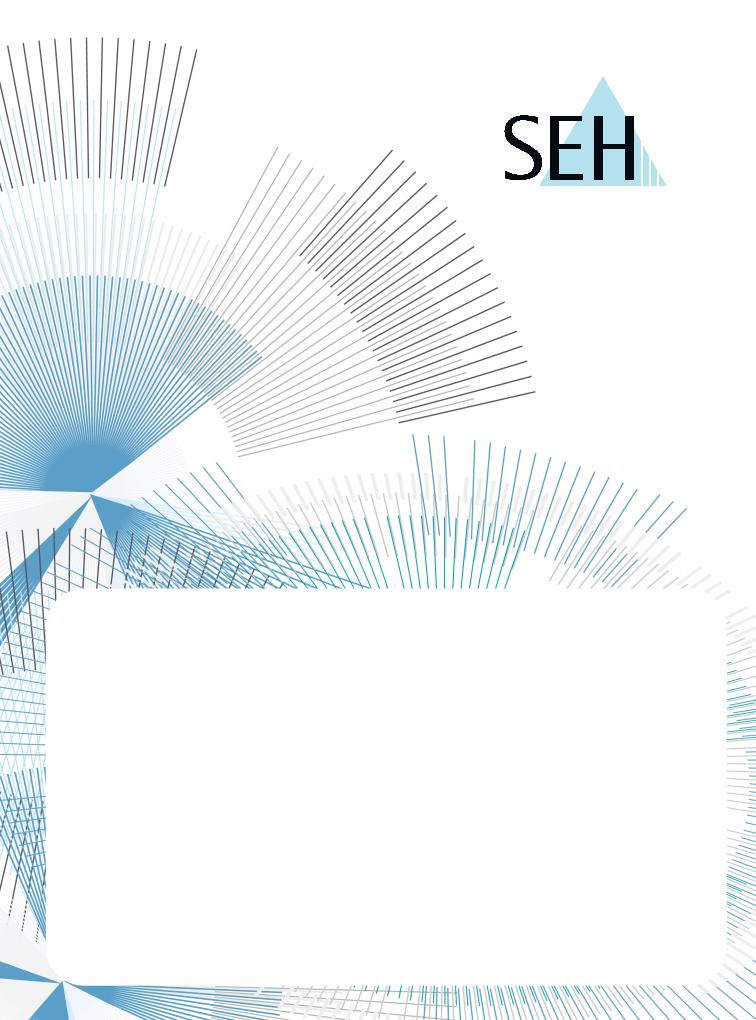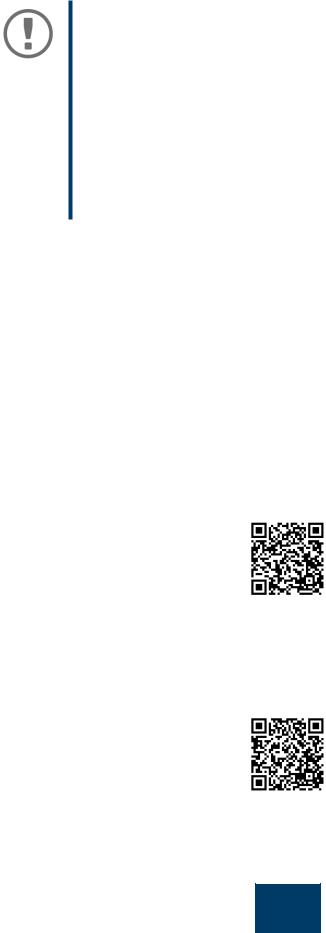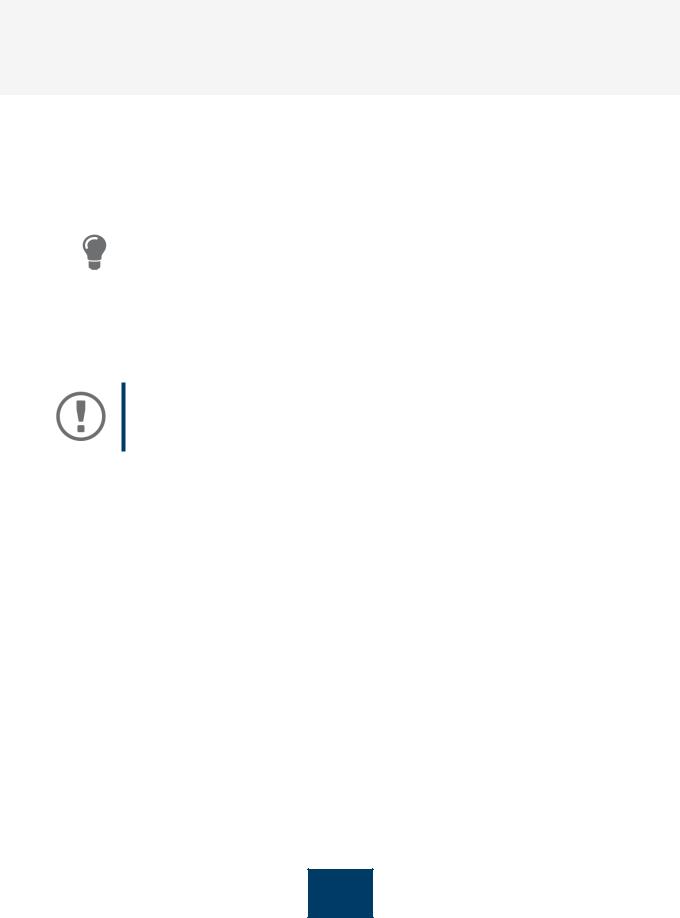SEH myUTN-2500 Manual

USB Deviceservers & USB Dongleservers
myUTN User Manual Windows
USB Deviceservers
myUTN-50a, myUTN-55, myUTN-2500
USB Dongleservers myUTN-80, myUTN-800

Manufacturer & Contact
SEH Computertechnik GmbH
Suedring 11
33647 Bielefeld
Germany
Phone: +49 (0)521 94226-29
Fax: +49 (0)521 94226-99
Support: +49 (0)521 94226-44
Email: info@seh.de
Web: http://www.seh-technology.com
Document
Type: User Manual
Title: myUTN User Manual Windows
Version: 4.0 | 2018-06
Legal Information
SEH Computertechnik GmbH has endeavored to ensure that the information in this documentation is correct. If you detect any inaccuracies please inform us at the address indicated above. SEH Computertechnik GmbH will not accept any liability for any error or omission. The information in this manual is subject to change without notification.
The original manual is the German version of this document and shall govern. All non-German versions of this document are translation of the original manual.
All rights are reserved. Copying, other reproduction, or translation without the prior written consent from SEH Computertechnik GmbH is prohibited.
© 2018 SEH Computertechnik GmbH
All trademarks, registered trademarks, logos and product names are property of their respective owners.

myUTN User Manual Windows
1 |
General Information........................................................................................ |
1 |
1.1 |
Product .............................................................................................................................................................................................. |
1 |
1.2 |
Documentation .............................................................................................................................................................................. |
3 |
1.3 |
Support and Service...................................................................................................................................................................... |
4 |
1.4 |
Your Safety ....................................................................................................................................................................................... |
4 |
1.5 |
First Steps ......................................................................................................................................................................................... |
5 |
2 |
Administration Methods................................................................................. |
6 |
2.1 |
Administration via myUTN Control Center .......................................................................................................................... |
6 |
2.2 |
Administration via the SEH UTN Manager............................................................................................................................ |
8 |
2.3 |
Administration via InterCon-NetTool .................................................................................................................................. |
13 |
2.4 |
Administration via Email .......................................................................................................................................................... |
15 |
3 |
Network Settings ........................................................................................... |
17 |
3.1 |
How to Configure IPv4 Parameters ...................................................................................................................................... |
18 |
3.2 |
How to Configure IPv6 Parameters ...................................................................................................................................... |
20 |
3.3 |
How to Configure WLAN.......................................................................................................................................................... |
21 |
3.4 |
How to Configure the DNS...................................................................................................................................................... |
23 |
3.5 |
How to Configure SNMP .......................................................................................................................................................... |
23 |
3.6 |
How to Configure Bonjour ...................................................................................................................................................... |
24 |
3.7 |
How to Configure Email (POP3 and SMTP)........................................................................................................................ |
25 |
3.8 |
How to Use the UTN Server in VLAN Environments (only myUTN-80 and later)................................................. |
27 |
4 |
Device Settings .............................................................................................. |
29 |
4.1 |
How to Configure the Device Time...................................................................................................................................... |
29 |
4.2 |
How to Assign a Description................................................................................................................................................... |
29 |
4.3 |
How to Assign a Name to a USB Port................................................................................................................................... |
30 |
4.4 |
How to Disable a USB Port (only myUTN-80 and later)................................................................................................. |
30 |
4.5 |
How to Configure the UTN (SSL) Port.................................................................................................................................. |
31 |
4.6 |
How to Get Messages (only myUTN-80 and later).......................................................................................................... |
31 |
4.7 |
How to Configure Acoustic Signals (myUTN-800 only) ................................................................................................ |
32 |
4.8 |
How Do I Determine What is Shown in the Display? (myUTN-800 only)................................................................ |
33 |
5 Working with the SEH UTN Manager ........................................................... |
35 |
|
5.1 |
How to Find UTN Servers/USB Devices in the Network................................................................................................ |
35 |
5.2 |
How to Establish a Connection to a USB Device ............................................................................................................. |
37 |
5.3 |
How to Cut the Connection between the USB Device and the Client .................................................................... |
38 |
5.4 |
How to Request an Occupied USB Device......................................................................................................................... |
38 |
5.5 |
How to Automate USB Device Connections and Program Starts ............................................................................. |
39 |
5.6 |
How to Find Status Information on USB Ports and USB Devices............................................................................... |
42 |
5.7 |
How to Use the Selection List and Manage User Access Rights with It................................................................... |
42 |
5.8 |
How to Use the SEH UTN Manager without Graphical User Interface (utnm)...................................................... |
45 |
6 |
Security........................................................................................................... |
49 |
6.1 |
How to Encrypt the USB Connection................................................................................................................................... |
49 |
6.2 |
How to Encrypt the Connection to the myUTN Control Center ................................................................................ |
51 |
6.3 |
How to Define the Encryption Strength for SSL/TLS Connections ........................................................................... |
51 |
6.4 |
How to Protect Access to the myUTN Control Center (User Accounts) .................................................................. |
53 |
6.5 |
How to Block Ports of the UTN Server (TCP Port Access Control) ............................................................................. |
54 |
6.6 |
How to Control Access to USB Devices (only myUTN-80 and later)......................................................................... |
55 |
6.7 |
How to Block USB Device Types............................................................................................................................................ |
56 |

myUTN User Manual Windows
6.8 |
How to Use Certificates ............................................................................................................................................................ |
56 |
6.9 |
How to Configure Network Authentication (IEEE 802.1X) ........................................................................................... |
60 |
7 |
Maintenance .................................................................................................. |
63 |
7.1 |
How to Restart the UTN Server .............................................................................................................................................. |
64 |
7.2 |
How to Update............................................................................................................................................................................. |
64 |
7.3 |
How to Backup Your Configuration ..................................................................................................................................... |
65 |
7.4 |
How to Reset Parameters to their Default Values ........................................................................................................... |
66 |
8 |
Appendix ........................................................................................................ |
68 |
8.1 |
Glossary .......................................................................................................................................................................................... |
69 |
8.2 |
Troubleshooting ......................................................................................................................................................................... |
70 |
8.3 |
Parameter Lists ............................................................................................................................................................................ |
73 |
8.4 |
SEH UTN Manager – Feature Overview............................................................................................................................... |
97 |
8.1 |
Index................................................................................................................................................................................................ |
99 |

myUTN User Manual Windows |
General Information |
|
|
1 General Information
•Product 1
•Documentation 3
•Support and Service 4
•Your Safety 4
•First Steps 5
1.1 Product
Purpose
UTN servers comprise USB Deviceservers and USB Dongleservers. As USB Deviceservers they make non-network- ready USB devices (e.g. USB hard disk drives, USB printers, etc.) and as USB Dongleservers non-network-ready USB dongles accessible via TCP/IP network. For this purpose, the USB devices respectively USB dongles will be connected to the USB ports of the UTN server. Then the UTN (UTN = USB to Network) functionality and the corresponding software tool 'SEH UTN Manager' establish a virtual USB connection between USB device respectively USB dongle and client. The USB device respectively USB dongle can be used as if it were connected locally.
Important:
The Dongleservers myUTN-80 and myUTN-800 are exclusively designed for the deployment of USB dongles.
Important:
Hereinafter USB dongles and USB devices are referred to as 'USB devices'.
System Requirements
The UTN server has been designed for the use in TCP/IP networks.
The SEH UTN Manager runs on the following systems:
• Windows XP or later except for Windows Vista and Windows Server 2008
(For Windows 7 and Windows Server 2008 R2 KB3033929 http://technet.microsoft.com/en-us/library/security/3033929 must be installed.)
• OS X 10.8.x, OS X 10.9.x, OS X 10.10.x, OS X 10.11.2 and later, macOS 10.12.x and later
(OS X 10.11.2 and later: operating system induced limited USB device support. macOS 10.12.x and later: operating system induced limited USB device support.)
•Linux: *.deb (for Debian-based systems) and *.rpm (for Red Hat-based systems) installation packages are available for 64-bit systems. A successful installation cannot be guaranteed due to the multitude of Linux varieties! The installation must be carried out on your own.
In the following 64-bit systems the installation was tested successfully: Debian: Debian 8.10, Debian 9, Ubuntu 14.04, Ubuntu 16.04
Red Hat: CentOS 6.9, CentOS 7.4, Fedora 25, Fedora 26, openSUSE Leap 42.3, Oracle 6.9, Oracle 7.4, Red Hat Enterprise Linux 7.4, SUSE Linux Enterprise 12.3
•IPv4 TCP/IP network
1

myUTN User Manual Windows |
General Information |
|
|
Important:
The support of isochronous USB devices (e.g. cameras, microphones, speakers, etc.) depends on
•the operating system:
-Windows
-Linux
•the UTN server model
(information can be found in the respective product information)
•the software version:
-firmware/software for UTN servers: 14.5.5 or later
-SEH UTN Manager: 3.1.4 or later
This document describes the usage in Windows environments. Information about the usage in other environments can be found in the relevant system-specific User Manual. More details can be found in chapter ’Documentation’ 3.
Combination with Associated Products
You can combine the UTN server with additional SEH Computertechnik GmbH products to ideally adapt the use of your devices to your environment!
Serviceplus
For the Dongleservers myUTN-80 and myUTN-800 service contracts, the Serviceplus packages, are available. The Serviceplus package extends the manufacturer's guarantee of a Dongleserver from 36 to 60 months. In addition,
you will receive quickly and easily an advance replacement device in case of a defect. Serviceplus packages must be purchased separately.
Detailed information:
https://www.seh-technology.com/services/service-packages.html
Rack Mount Kits
For a perfect and safe storage of your Dongleserver we recommend the 'Rack Mount Kits' (RMK). With the installation kits, you can install the Dongleservers in 19" server racks.
Detailed information:
https://www.seh-technology.com/products/rack-mount-kits.html
2

myUTN User Manual Windows |
General Information |
|
|
1.2 Documentation
Please load all current documents from our Website:
http://www.seh-technology.com
Further applicable documents
Thee UTN documentation consists of the following documents:
Quick Installation Guide |
Print, PDF |
Information on safety, technical data, instructions for |
|
|
hardware installation and initial setup, and declarations |
|
|
of conformity. |
User Manual |
Detailed description of the UTN server configuration and |
|
|
|
administration. System-specific instructions for the fol- |
|
|
lowing systems: |
|
|
- Windows |
|
|
- OS X/macOS |
|
|
- Linux |
Online help |
HTML |
Information on how to use the web interface 'myUTN |
|
|
Control Center'. |
|
|
(Embedded into web interface; no download.) |
Product information |
Print, PDF |
Features and technical data |
Brochures |
Print, PDF |
|
Open source licenses |
online |
http://www.seh-technology.com/services/licenses.html |
Symbols and Legend
A variety of symbols and mark-ups are used within this document.
WARNING
Warning
Important:
Important information
Requirement
•Numeration
1.Numeration
Result
Tip
Bold
Courier
'Proper names'
A warning contains important information that must be heeded. Nonobservance may lead to malfunctions.
These notes contain crucial information for failure-free operation.
Requirements that must be met before you can begin the action.
Listing
Step-by-step instructions
Outcome of a performed action
Recommendations and beneficial advice
Reference (Within the document you can use hyperlinks.)
Established terms (e.g. of buttons, menu items, or selection lists)
Code (e.g. for command lines or scripts), Paths
Single quotation marks identify proper names
3

myUTN User Manual Windows |
General Information |
|
|
1.3 Support and Service
SEH Computertechnik GmbH offers extensive Support. If you have any questions, please contact us.
Monday through Thursday |
8:00 a.m. to 4:45 p.m. |
Friday |
8:00 a.m. to 15:15 p.m. |
+49 (0)521 94226-44 |
|
support@seh.de |
|
All information and downloads regarding your product is available on our website:
http://www.seh-technology.com
1.4 Your Safety
Read and observe all safety regulations and warnings found in the documentation, on the device and on the packaging. This will avoid potential misuse and prevent damages to people and devices.
Intended Use
The UTN server is used in TCP/IP networks and has been designed for use in office environments. It allows network users to access non-network-ready USB devices.
Improper Use
All uses of the device that do not comply with the functionalities described in the myUTN documentation are regarded as improper uses.
Safety Regulations
Before starting the initial setup of the UTN server, read and observe the safety regulations in the 'Quick Installation Guide'. This document is enclosed in the packaging in printed form.
Warnings
Read and observe all warnings mentioned in this document. Warnings are found before any instructions known to be dangerous. They are presented as follows:
WARNING
Warning!
Liability and Guarantee
SEH Computertechnik GmbH will not accept any liability for personal injuries, property damages and consequential damages resulting from the non-observance of the mentioned safety regulations and warnings. Non-obser- vance will also result in any guarantee claims becoming void.
4

myUTN User Manual Windows |
General Information |
|
|
Modifications to the Device and Repairs
It is not allowed to make modifications to the hardware and software or to try to repair the device. If your device needs to be repaired, contact our support 4.
1.5 First Steps
1.Read and observe the security regulations in order to avoid damages to people and devices 4.
2.Install the hardware. The hardware installation includes connecting the UTN server to the network, USB devices, and power grid ‘‘Quick Installation Guide‘.
3.Install the software. The software installation includes installing the required software tool 'SEH UTN Manager' on your client and assigning an IP address ‘‘Quick Installation Guide‘.
4.Configure the UTN server so that it is optimally embedded it into your network and sufficiently protected. All information on how to do this you will find in this document.
5.Use the SEH UTN Manager to establish and manage connections to the USB devices which are connected to the UTN server 35.
You can find information on the UTN documentation in chapter ’Documentation’ 3.
5

myUTN User Manual Windows |
Administration Methods |
|
|
2 Administration Methods
You can administer, configure and maintain the UTN server in a number of ways:
•Administration via myUTN Control Center 6
•Administration via the SEH UTN Manager 8
•Administration via InterCon-NetTool 13
•Administration via Email 15
2.1 Administration via myUTN Control Center
The UTN server has a user interface, the myUTN Control Center which can be opened in an Internet browser (e.g. Microsoft Edge).
The UTN server can be configured, monitored and maintained via the myUTN Control Center.
•Open myUTN Control Center in Browser 6
•myUTN Open Control Center via SEH UTN Manager 6
•myUTN Open Control Center via InterCon-NetTool 6
•Controls 7
Open myUTN Control Center in Browser
The UTN server is connected to the network and the power grid.
The UTN server has a valid IP address 18.
1.Open your browser.
2.Enter the IP address of the UTN server as the URL.
The myUTN Control Center is displayed in the browser.
Important:
If the myUTN Control Center is not displayed, check if a gateway is configured ( 18) and the proxy settings of your browser.
myUTN Open Control Center via SEH UTN Manager
The UTN server is connected to the network and the power grid.
The UTN server has a valid IP address 18.
The SEH UTN Manager is installed on the client 8.
1.Start the SEH UTN Manager.
2.In the selection list, select the UTN server.
3.In the menu bar, select UTN Server – Configure.
Your browser opens and the myUTN Control Center is displayed.
myUTN Open Control Center via InterCon-NetTool
1.Start the InterCon-NetTool.
2.In the device list, select the UTN server.
3.In the menu bar, select Actions – Launch Browser.
Your browser opens and the myUTN Control Center is displayed.
6

myUTN User Manual Windows |
Administration Methods |
Controls |
|
|
4 |
|
|
|
5 |
|
6 |
|
|
|
|
|
|
|
|
1
3
2
7
Figure 1: myUTN Control Center |
|
|
1 |
Menu item |
After selecting a menu item (simple mouse click), the available submenu |
|
|
items are displayed to the left. |
2 |
Submenu items |
After selecting a submenu item, the corresponding page with its content |
|
|
is displayed. |
3 |
Page |
Menu content |
4 |
Product & Company |
Manufacturer’s contact details and additional product information. |
5 |
Sitemap |
Overview of and direct access to all pages of the myUTN Control Center. |
6 |
Flags |
Language selection |
7 |
? icon |
Online help |
7

myUTN User Manual Windows |
Administration Methods |
|
|
2.2 Administration via the SEH UTN Manager
The 'SEH UTN Manager' is a software tool developed by SEH Computertechnik GmbH. The SEH UTN Manager is used to establish and manage connections to the USB devices connected to the UTN servers.
•Features 8
•Versions 9
•Installation 10
•Program Start 12
Features
The software is installed on all clients that are meant to access a USB device in the network. After the SEH UTN Manager is started, the network is scanned for connected UTN servers. All UTN servers found and their connected USB devices are displayed in the 'network list'. To use the USB devices connected to the UTN server, you have to add the UTN server to the 'selection list'. The devices shown in the selection list can be administrated and the connected USB devices can be used. Working working with the SEH UTN Manager is described in detail in the chapter ’Working with the SEH UTN Manager’ 35.
WARNING
UTN (1) and the corresponding SEH UTN Manager only work in IPv4 networks.
In IPv6-only networks only the myUTN Control Center (6) can be accessed to administrate the UTN server.
1
|
3 |
|
|
2 |
|
|
|
5 |
|
|
|
|
|
|
|
|
|
|
|
4
Figure 2: SEH UTN Manager
8

myUTN User Manual Windows |
Administration Methods |
|
|
1Menu bar
2Selection List
3Buttons for editing the selection list
4Buttons for managing the port connection
Available menu items
Shows the selected UTN servers and the connected USB devices.
Opens the dialog for searching UTN servers in the network and for selecting the desired devices 35.
Establishes a connection to the USB device connected to the USB port ( 37) or interrupts the connection (38).
5Display area for the properShows information on the selected UTN server or USB device 42. ties
Detailed information on how to use the SEH UTN Manager can be found in the 'SEH UTN Manager Online Help'. To start the online help, go to the SEH UTN Manager menu bar and select Help – Online Help.
Important:
Some SEH UTN Manager features might not be displayed or are displayed as inactive. This depends on
•the type and location of the selection list
•the user's rights and the group memberships on the client
•the client operating system
•the settings of the product-specific security mechanisms
•the status of the UTN server and respective USB port
More details can be found in chapter ’SEH UTN Manager – Feature Overview’ 97.
Versions
The SEH UTN Manager is available in two versions:
•Complete Version:
SEH UTN Manager with graphical user interface (Figure 2 8) and additional features.
•Minimal version (without graphical user interface):
Usage only via command line ('utnm' 45) and automated programs ('UTN Actions' 39).
Important:
The complete version is recommended for general use.
The minimal version is to be used by experts only!
In both versions the 'SEH UTN Service' works in the background and is automatically active after the system start. The service can be controlled by means of the usual administration methods.
Additionally, the following user groups are distinguished:
•users with administrative rights (administrator)
•users without administrative rights (standard user)
Important:
Some features can only be configured by administrators. More details can be found in chapter ’SEH UTN Manager – Feature Overview’ 97.
9

myUTN User Manual Windows |
Administration Methods |
|
|
Installation
In order to use the SEH UTN Manager, the program must be installed on a computer with a Windows operating system. The SEH UTN Manager installation file can be found on the SEH Computertechnik GmbH website:
http://www.seh-technology.com/services/downloads.html
The installation file is available as '*.exe' for Windows systems. The file contains both versions of the SEH UTN Manager. Instead of the standard installation, an unattended installation may be carried out.
•’Standard Installation’ 10
•’Unattended Installation’ 10
Standard Installation
The SEH UTN Managers installation is suited for Windows XP or later except for Windows Vista and Windows Server 2008.
(For Windows 7 and Windows Server 2008 R2 KB3033929 must be installed http://technet.microsoft.com/en-us/library/security/ 3033929.)
The installation can only be carried out by users with administrative rights.
1.Start the SEH UTN Manager installation file.
2.Follow the installation routine.
The SEH UTN Manager is installed on your client.
If used in server-based environments (Citrix XenApp, Microsoft Remote Desktop Services/Terminal Services) and virtualized environments (VMware, Citrix XenDesktop, Microsoft HyperV, etc.) the Windows system may lack required drivers. The installation routine checks the available drivers during the installation process. If drivers are missing, another installer ('USB driver for SEH UTN Manager'). This installer will prepare the installation of the required drivers.
Unattended Installation
An unattended installation takes place without any time-consuming user input. In addition, the SEH UTN Manager UTN Manager can be automatically installed on a large number of clients via login scripts. For more information, refer to the documentation of your operating system.
Default settings used:
•Complete version
•Installation for all users of the client
•Target directory: %PROGRAMFILES%\SEH Computertechnik GmbH\SEH UTN Manager
(Where %PROGRAMFILES% is a Windows environment variable for the 'Programs' folder. By means of the command line, the path can be determined as follows: echo %PROGRAMFILES%)
• Start menu folder: SEH Computertechnik GmbH\SEH UTN Manager
•A desktop shortcut will be created.
•SEH UTN Manager will start automatically after the installation.
10

myUTN User Manual Windows |
Administration Methods |
|
|
The SEH UTN Managers installation is suited for Windows XP or later except for Windows Vista and Windows Server 2008.
(For Windows 7 and Windows Server 2008 R2 the following must be installed: KB3033929 http://technet.microsoft.com/en-us/library/ security/3033929 and hotfix 2921916 http://support.microsoft.com/en-us/help/2921916/the-untrusted-publisher-dialog-box-ap- pears-when-you-install-a-driver-i.)
The installation can only be carried out by users with administrative rights.
Important:
By installing the SEH UTN Manager, you automatically accept the SEH Computertechnik GmbH agreement concerning the license and the use of the software. The agreement can be found on the website of SEH Computertechnik GmbH:
http://www.seh-technology.com/services/licenses.html
1.Open the command-line interface.
2.Change to the directory containing the SEH UTN Manager installation file.
3.Enter the command sequence: "sehutnmanager-win-X.X.X.exe" /S [<command>]
Commands: Table 1 11.
4.Confirm your entry.
The sequence of commands will be run.
Table 1: Installation commands
Command |
Description |
|
|
/A |
Installs SEH UTN Manager for all users. |
/C |
Installs SEH UTN Manager for the current user only. |
/F=<folder name> |
Overrides the default folder name of the Start menu folder. Subfolders can be |
|
specified with '/'. |
/G |
Installs the complete version (10) of SEH UTN Manager. |
|
Recommended for general use. |
/I=<path> |
Overrides the default installation directory. An absolute path must be specified. |
|
It has to be the last parameter used in the command line and must not contain |
|
any quotes, even if the path contains spaces. |
/K |
Does not create a desktop shortcut. |
/M |
Installs the minimal version (10) of SEH UTN Manager. |
|
Expert use only! |
/R |
Runs SEH UTN Manager after the installation is complete. |
/S |
Instructs the installation to be silent. There is no user interaction and the user |
|
cannot cancel the installation. |
/U |
Updates an existing SEH UTN Manager. |
|
(If no SEH UTN Manager is installed, it will be installed using the default installa- |
|
tion settings.) |
/V1 |
Enables command line logging to troubleshoot installation problems. |
/V2 |
Creates a log file in the installation folder. The file contains information to trou- |
|
bleshoot installation problems. |
/V3 |
Enables command line logging and creates a log file in the installation direc- |
|
tory. Both provide information to help troubleshoot installation issues. |
/? |
Shows the help page. |
11

myUTN User Manual Windows |
Administration Methods |
|
|
Program Start
You recognize the SEH UTN Manager by its icon:  . The program is started with the usual methods of your operating system.
. The program is started with the usual methods of your operating system.
Update
You can check for program updated manually and automatically. More information can be found in the 'SEH UTN Manager Online Help'.
12

myUTN User Manual Windows |
Administration Methods |
|
|
2.3 Administration via InterCon-NetTool
The InterCon-NetTool is a software tool developed by SEH Computertechnik GmbH for the administration of SEH network devices (print servers, TPG, UTN servers and so on). Depending on the network device you can perform different actions with the InterCon-NetTool.
•Function 13
•Installation 14
•Program Start 14
Function
After the InterCon-NetToolhas been started, the network will be scanned for connected network devices. The network range to be scanned is freely definable. All network devices found will be displayed in the 'device list'. You can select and configure the devices in the device list.
WARNING
The InterCon-NetTool only works in IPv4 networks.
In IPv6-only networks only the myUTN Control Center (6) can be accessed to administrate the UTN server.
If you can perform a task with the InterCon-NetTool it is described in the corresponding chapter.
|
1 |
|
|
|
|
|
|
|
2 |
|
|
|
|
|
1 |
|
|
|
|
|
|
|
|
|
|
|
|
4 |
|
|
|
|
|
|
|
|
|
|
|
|
|
|
|
|
5
Figure 3: InterCon-NetTool |
|
|
1 |
Menu bar |
Available menu items |
2 |
Toolbar |
Available actions |
3 |
Device list |
Shows devices available in the network and device information. |
4 |
Filters for the device list |
Filters determine which devices are shown in the device list. |
5 |
Shortcut menu |
Available device actions |
Detailed information on how to use the InterCon-NetTool can be found in the 'InterCon-NetTool Online Help'. To start the online help, go to the menu bar and select Help – Online Help.
13

myUTN User Manual Windows |
Administration Methods |
|
|
Installation
In order to use the InterCon-NetTool, the program must be installed on a computer with Windows operating system. The installation file of the InterCon-NetTool can be found on the SEH Computertechnik GmbH homepage:
http://www.seh-technology.com/services/downloads.html
The installation file is available as '*.exe' for Windows systems.
1.Start the InterCon-NetTool installation file.
2.Select the desired language.
3.Follow the installation routine.
The InterCon-NetTool will be installed on your client.
Program Start
You can identify the InterCon-NetTool by its icon:  . Start it with the usual methods of your operating system.
. Start it with the usual methods of your operating system.
14

myUTN User Manual Windows |
Administration Methods |
|
|
2.4 Administration via Email
You can administrate the UTN server via email and thus from any computer Internet access (remote access):
•Get UTN server status
•Set UTN server parameters
•UTN server update
To do so, you write commands into the email message header Table 2 15.
Table 2: Commands and comment:
Commands |
Option |
|
<Command> |
get status |
|
|
get |
parameters |
|
set |
parameters |
update utn
help
[<Comment>]
Description
You get the UTN server status page.
You get the UTN server parameter list.
Sends one or more parameters to the UTN server which will then be adopted by the UTN server.
Write the parameters and their values into the email message body: <parameter> = <value>
The syntax and values can be found in the parameter lists 73.
Carries out an automatic update using the software that is attached to the mail.
You get a page with information on remote maintenance.
Freely definable text for descriptions.
The following applies to the instructions:
•not case-sensitive
•one or more space characters are allowed
•max. length is 128 byte
•only the ASCII format can be read.
In addition, a TAN is needed to execute updates or parameter changes. To begin with, you have to get a status page via email (Table 2 15) because it contains the TAN. You enter the received TAN into the email message body. A space character must follow.
A DNS server is configured on the UTN server 23.
In order to receive emails, the UTN server must be set up as user with its own email address on a POP3 server.
POP3 and SMTP parameters have been configured on the UTN server 25.
1.Open an email program.
2.Write a new email:
-As recipient enter the UTN server address.
-Into the subject line enter an instruction. cmd: <command> [<comment>] Commands and comment: Table 2 15.
-Into the email message body enter a TAN, if applicable.
3.Send the email.
The UTN server receives the email and carries out the instruction.
15

myUTN User Manual Windows |
Administration Methods |
|
|
Examples
You want to get the UTN server parameter list:
To: UTNserver@company.com
Subject: cmd: get parameters
You want to set the 'configuration' parameter: To: UTNserver@company.com
Subject: cmd: set parameters
Email message body: TAN = nUn47ir79Ajs7QKE sys_descr = <Your description>
16

myUTN User Manual Windows |
Network Settings |
|
|
3 Network Settings
To optimally embed your UTN server into your network, you can configure the following settings:
•How to Configure IPv4 Parameters 18
•How to Configure IPv6 Parameters 20
•How to Configure WLAN 21
•How to Configure the DNS 23
•How to Configure SNMP 23
•How to Configure Bonjour 24
•How to Configure Email (POP3 and SMTP) 25
•How to Use the UTN Server in VLAN Environments (only myUTN-80 and later) 27
17

myUTN User Manual Windows |
Network Settings |
|
|
3.1 How to Configure IPv4 Parameters
In the hardware installation (‘Hardware Installation Guide‘) the UTN server is connected to the network. The UTN server then checks if it gets IP address dynamically via the boot protocols BOOTP (Bootstrap Protocol) or DHCP (Dynamic Host Configuration Protocol). If this is not the case, the INU server assigns itself an IP address via Zeroconf from the address range which is reserved for Zeroconf (169.254.0.0/16).
Important:
If the UTN server is connected to an IPv6 network, it will automatically receive an additional IPv6 address 20.
The IPv4 address assigned to the UTN server can be found via the software tools 'SEH UTN Manager' and 'Inter- Con-NetTool'. This step usually is carried out during the initial set up (‘Quick Installation Guide‘).
To optimally embed the UTN server into a TCP/IP network, you can configure different IPv4 parameters and/or manually assign a static IP address to the UTN server.
•Configuring IPv4 Parameters via the myUTN Control Center 18
•Configuring IPv4 Parameters via SEH UTN Manager 19
•Determining the IPv4 Address via SEH UTN Manager and Configuring IPv4 Parameters 19
•Determining the IPv4 Address via InterCon-NetTooland/or Configuring IPv4 Parameters 19
Configuring IPv4 Parameters via the myUTN Control Center
1.Start the myUTN Control Center.
2.Select NETWORK – IPv4.
3.Configure the IPv4 parameters; Table 3 18.
4.Click Save & Restart to confirm.
The settings will be saved.
Table 3: IPv4 parameters
Parameters |
Description |
||
|
|
|
|
DHCP |
Enables or disables the protocols DHCP, BOOTP, and ARP/PING. |
||
BOOTP |
The IP address assignment via DHCP and BOOTP is automatic if one of these |
||
ARP/PING |
protocols is implemented in your network. |
||
|
You can use the commands ARP and PING to change an IP address which was |
||
|
assigned via Zeroconf. The implementation depends on your system; read the |
||
|
documentation of your operating system. |
||
|
|
|
We recommend disabling these options once an IP |
|
|
|
|
|
|
|
address has been assigned to the UTN server. |
|
|
|
|
IP address |
IP address of the UTN server. |
||
Subnet mask |
Subnet mask of the UTN server. |
||
|
Subnet masks are used to logically partition big networks into subnetworks. If |
||
|
you are using the UTN server in a subnetwork, it requires the subnet mask of |
||
|
the subnetwork. |
||
Gateway |
IP address of the network's standard gateway which the UTN server uses. |
||
|
With a gateway, you can address IP addresses from other networks. |
||
|
|
|
|
18

myUTN User Manual Windows |
Network Settings |
|
|
Configuring IPv4 Parameters via SEH UTN Manager
The SEH UTN Manager (complete version) is installed on the client 8.
The UTN server is shown in the selection list 35.
1.Start the SEH UTN Manager.
2.In the selection list, select the UTN server.
3.In the menu bar, select UTN Server–Set IP Address. The Set IP Address dialog appears.
4.Enter the relevant TCP/IP parameters.
5.Click OK.
The settings will be saved.
Determining the IPv4 Address via SEH UTN Manager and Configuring IPv4 Parameters
The SEH UTN Manager searches the network for connected INU servers.
The SEH UTN Manager (complete version) is installed on the client 8.
1.Start the SEH UTN Manager.
2.Confirm the note dialog Your Selection List seems to be empty with Yes.
If no note dialog is available and the main dialog appears, select Selection List–Edit in the menu bar.
The Edit Selection List dialog appears. 3. In the network list, select the INU server.
If you are using several UTN servers of the same model, you can identify a specific device by its default name (69) or the connected USB devices.
4.In the shortcut menu, select Set IP Address. The Set IP Address dialog appears.
5.Enter the relevant TCP/IP parameters.
6.Click OK.
The settings will be saved.
Determining the IPv4 Address via InterCon-NetTooland/or Configuring IPv4 Parameters
The InterCon-NetTool is installed on the client 13.
The network scan via multicast is enabled in the InterCon-NetTool.
1.Start the InterCon-NetTool.
2.In the device list, select the UTN server.
If you do not know the IP address, you can identify the UTN server in several ways:
-by its type
-if your are using several UTN servers of the same model, by its hardware address (which can be found in the type plate at the device bottom)
-if the UTN server received its address via Zeroconf, it will appear under the filter 'Zeroconf'
3.In the menu, select Installation–IP Wizard. Der IP Wizard is started.
4.Follow the instructions of the wizard.
The settings will be saved.
19

myUTN User Manual Windows |
Network Settings |
|
|
3.2 How to Configure IPv6 Parameters
IPv6 (Internet Protocol Version 6) is the successor of the still predominantly used IPv4 (Internet Protocol Version 4). IPv6 offers the same basic functions but has many advantages such as the increased address space of 2128
(IPv6) instead of 232 (IPv4) IP addresses and auto configuration.
Important:
IPv6 address notation differs from IPv4: An IPv6 address consists of 128 bits. The normal format of an IPv6 address is eight fields. Each field contains four hexadecimal digits representing 16 bits.
Example: 2001:db8:4:0:2c0:ebff:fe0f:3b6b
As a URL in a Web browser, an IPv6 address must be enclosed in square brackets. This prevents port numbers from being mistakenly regarded as part of an IPv6 address.
Example: http://[2001:db8:4:0:2c0:ebff:fe0f:3b6b]:443
The URL will only be accepted by browsers that support IPv6.
You can embed the UTN server into an IPv6 network.
WARNING
UTN (1) and the corresponding SEH UTN Manager only work in IPv4 networks. The InterCon-NetTool also only works in IPv4 networks.
In IPv6-only networks only the myUTN Control Center (6) can be accessed to administrate the UTN server.
The UTN server will automatically receive one or more IPv6 addresses in addition to its IPv4 address. To optimally embed the UTN into your network, you can configure IPv6 parameters.
1.Start the myUTN Control Center.
2.Select NETWORK – IPv6.
3.Configure the IPv6 parameters; Table 4 20.
4.Click Save & Restart to confirm.
The settings will be saved.
Table 4: IPv6 parameters
Parameters |
Description |
|
|
IPv6 |
Enables/disables the IPv6 functionality of the UTN server. |
Automatic configuration |
Enables/disables the automatic assignment of the IPv6 address to the UTN |
|
server. |
IPv6 address |
Defines an IPv6 unicast address in the format n:n:n:n:n:n:n:n which is manually |
|
assigned to the UTN server. |
|
• Every 'n' represents the hexadecimal value of one of the eight 16 bit ele- |
|
ments of the address. |
|
• Leading zeros can be omitted. |
|
• An IPv6 address may be entered or displayed using a shortened version when |
|
successive fields contain all zeros (0). In this case, two colons (::) are used. |
Router |
Manually defines a static router to which the UTN server sends its requests. |
|
|
20

|
myUTN User Manual Windows |
Network Settings |
||
|
|
|
|
|
|
Parameters |
Description |
|
|
|
|
|
|
|
|
Prefix length |
Defines the length of the subnet prefix for the IPv6 address. The value 64 is pre- |
||
|
|
set. |
|
|
Address ranges (e.g. your network) are specified with prefixes. To do this, the prefix length (number of bits used) is added to the IPv6 address as a decimal number and the decimal number is preceded by '/'.
3.3 How to Configure WLAN
The 'myUTN-55' is a WLAN device (Wireless Local Area Network) and supports the following standards:
•IEEE 802.11b
•IEEE 802.11g
•IEEE 802.11n
You can view the current WLAN settings in the myUTN Control Center under NET-
WORK – WLAN.
To optimally integrate the UTN server into your network, configure the WLAN parameters to match your WLAN settings (network name, encryption, etc.). For this purpose, the UTN server must already be embedded into your WLAN and be addressable. The initial setup is described in your product's 'Quick Installation Guide'.
You know the settings of the WLAN.
The UTN server is within the WLAN range.
Important:
If the UTN server changes the network, it may receive a new IP configuration. If this is the case, the connection to the myUTN Control Center is interrupted.
1.Start the myUTN Control Center.
2.Select NETWORK – WLAN.
3.Configure the WLAN parameters; Table 5 21.
4.Click Save & Restart to confirm.
The settings will be saved.
Table 5: WLAN parameters
Parameters |
Description |
|
|
Mode |
Defines the communication mode (network infrastructure): |
|
• Ad hoc: Your WLAN is a decentralized ad-hoc-network in which devices |
|
communicate directly with each other (peer-to-peer). |
|
• Infrastructure: Your WLAN is an infrastructure network with an access point/ |
|
router as centrals communication hub. The access point is connected to the |
|
fixed network with a cable. |
Network name (SSID) |
Enter your WLAN’s network name, also known as SSID (Service Set Identifier). |
|
|
21

|
myUTN User Manual Windows |
Network Settings |
|||||
|
|
|
|
|
|
|
|
|
Parameters |
Description |
|
|
|||
|
|
|
|
|
|
|
|
|
Roaming |
Enables/disables roaming (switching from one access point/router to another): |
|
||||
|
|
If your WLAN covers a widespread area with several access points/routers (with |
|
||||
|
|
identical settings) and the UTN server changes position, the UTN server will |
|
||||
|
|
automatically switch to the better signal without loss of connection if roaming |
|
||||
|
|
is activated. |
|
|
|||
|
|
(Infrastructure mode only) |
|
||||
|
Channel |
Enter your WLAN's channel (frequency range). |
|
||||
|
|
(Ad hoc mode only) |
|
||||
|
|
|
|
|
|
WARNING |
|
|
|
|
|
|
|
|
|
|
|
|
|
|
|
Only use WLAN channels authorized for your country! |
|
|
|
|
|
|
|
The UTN is an international product which supports a number of |
|
|
|
|
|
|
|
channels. Channels are statutorily regulated by national authori- |
|
|
|
|
|
|
|
ties. So the UTN server might support channels which are forbid- |
|
|
|
|
|
|
|
den to use in your country. |
|
|
|
|
|
|
|
Inform yourself about national regulations. |
|
|
Encryption method |
Select the encryption method that protects your WLAN. |
|
||||
|
|
|
|
|
|
Important: |
|
|
|
|
|
|
|
|
|
|
|
|
|
|
|
We recommend to use hexadecimal keys for WEP. |
|
|
|
|
|
|
|
Some access points/routers convert WEP keys in ASCII format to |
|
|
|
|
|
|
|
hexadecimal format. In this case, the ASCII key on the UTN server |
|
|
|
|
|
|
|
and the hexadecimal key on the access point/router do not match. |
|
|
|
|
|
|
|
|
|
|
Use WEP key |
Defines the WEP key to be used. |
|
||||
|
Key 1–4 |
Defines the WEP keys. Four WEP keys are available. The key type defines the |
|
||||
|
|
max. number of characters as well as the permitted character set for the WEP |
|
||||
|
|
keys. |
|
|
|||
|
|
|
|
|
|
Important: |
|
|
|
|
|
|
|
|
|
|
|
|
|
|
|
If your access point supports multiple WEP keys, make sure that |
|
|
|
|
|
|
|
the key numbers on access point and UTN server are identical. |
|
|
|
|
|
|
|
Example: The ABCDE must have the number 2 on both devices |
|
|
|
|
|
|
|
|
|
|
|
|
|
|
|
(and not 1 on the access point and 2 on the UTN server). |
|
|
|
|
|
|
|
|
|
|
PSK |
Defines the Pre Shared Key (PSK) for Wi-Fi Protected Access (WPA). |
|
||||
|
Authentication method |
Choose the authentication mechanism which is used in your WLAN. |
|
||||
|
|
For further information see ’How to Configure Network Authentication (IEEE |
|
||||
|
|
802.1X)’ 60. |
|
||||
|
|
|
|
|
|
|
|
22

myUTN User Manual Windows |
Network Settings |
|
|
3.4 How to Configure the DNS
DNS is a service to translate domain names into IP addresses and vice versa. Enable DNS so that you can enter host names instead of IP addresses when you define servers.
Example: Time server configuration (29) with ntp.server.de instead of 10.168.0.140.
Important:
If your network in configured accordingly, the UTN server receives the DNS settings automatically via DHCP. A DNS server assigned in such a manner always takes precedence over manual settings.
Your network has a DNS server.
1.Start the myUTN Control Center.
2.Select NETWORK – DNS.
3.Configure the DNS parameters; Table 6 23.
4.To confirm, click Save.
The settings will be saved.
Table 6: DNS parameters
Parameters |
Description |
|
|
DNS |
Enables/disables the name resolution via a DNS server. |
Primary DNS server |
Defines the IP address of the primary DNS server. |
Secondary DNS server |
Defines the IP address of the secondary DNS server. |
|
The secondary DNS server is used if the first one is not available. |
Domain name (suffix) |
Defines the domain name of an existing DNS server. |
|
|
3.5 How to Configure SNMP
SNMP (Simple Network Management Protocol) is protocol for configuring and monitoring network elements. The protocol controls communication between the monitored devices and the monitoring station (SNMP management tool). Information can be read and changed.
SNMP exists in 3 versions, the UTN supports version 1 and 2.
SNMPv1
SNMPv1 is the first and most simple SNMP version. A disadvantage is the insecure access control which is the community: a community groups monitoring station and monitored devices. This makes their administration easier. There are two types of communities, read-only and read/write. For both the community name is also the password used between the monitoring station and the monitored devices. As it is transmitted as clear text, it does not offer sufficient protection.
SNMPv3
SNMPv3 is the newest SNMP version. It contains enhancements and a new security concept which includes, amongst other thins, encryption and authentication. Therefore, a SNMP user with name and password must be created in the monitoring station. This user must then be specified in the UTN server.
Important:
The user accounts are also used to access the myUTN Control Center and thus are to be defined under SECURITY - Device access ’How to Protect Access to the myUTN Control Center (User Accounts)’ 53.
23

myUTN User Manual Windows |
Network Settings |
|
|
SNMPv3 users are created in the monitoring station. (Only for SNMPv3.)
The SNMPv3 users from the monitoring station are specified on the UTN server 53. (Only for SNMPv3.)
1.Start the myUTN Control Center.
2.Select NETWORK – SNMP.
3.Configure the SNMP parameters; Table 7 24.
4.To confirm, click Save.
The settings will be saved.
Table 7: SNMP Parameters
Parameters |
Description |
|||
|
|
|
|
|
SNMPv1 |
Enables/disables SNMPv1. |
|||
Read-only |
Enables/disables the write protection for the community. |
|||
Community |
SNMP community name Enter the name as it is defined in the monitoring sta- |
|||
|
tion. |
|||
|
|
|
|
Important: |
|
|
|
|
|
|
|
|
|
The default name is 'public'. This name is commonly used for read/ |
|
|
|
|
write communities. We recommend to change it as soon as possi- |
|
|
|
|
ble to increase security. |
|
|
|
|
|
|
|
|
|
|
SNMPv3 |
Enables/disables SNMPv3. |
|||
Hash |
Defines the hash algorithm. |
|||
Access rights |
Defines the access rights of the SNMP user. |
|||
Encryption |
Defines the encryption method. |
|||
|
|
|
|
|
3.6 How to Configure Bonjour
Bonjour is a technology which automatically detects devices and services in TCP/IP networks.
The UTN server uses Bonjour to
•verify IP addresses
•announce and find network services
•match host names and IP addresses
1.Start the myUTN Control Center.
2.Select NETWORK – Bonjour.
3.Configure the Bonjour parameters; Table 8 24.
4.To confirm, click Save.
The settings will be saved.
Table 8: Bonjour parameters
Parameters |
Description |
|
|
Bonjour |
Enables/disables Bonjour. |
Bonjour name |
Defines the Bonjour name of the UTN server. |
|
The UTN server uses this name to announce its Bonjour services. If no Bonjour |
|
name is entered, a default name will be used (device name@ICxxxxxx). |
|
|
24

myUTN User Manual Windows |
Network Settings |
|
|
3.7 How to Configure Email (POP3 and SMTP)
The UTN server can be administered via email (15) and offers a notification service (31) which sends you status and error messages via email. To use these features, the email protocols 'POP3' and 'SMTP' must be set up on the UTN server.
A client, e.g. the UTN server, uses POP3 (Post Office Protocol Version 3) to fetch emails from a mail server. POP3 must be set up on the UTN server so that it can be administered via email.
SMTP (Simple Mail Transfer Protocol) is used to send and forward emails. The UTN server needs SMTP for the administration via email and the notification service.
•Configuring POP3 25
•Configuring SMTP 25
Configuring POP3
An email user account for the UTN server is set up on the POP3 server.
1.Start the myUTN Control Center.
2.Select NETWORK – Email.
3.Configure the POP3 parameters; Table 9 25.
4.To confirm, click Save.
The settings will be saved.
Table 9: POP3 parameters
Parameters |
Description |
|
|
POP3 |
Enables/disables the POP3 functionality. |
POP3 – Server name |
Defines the POP3 server via its IP address or host name. |
|
A host name can only be used if a DNS server was configured beforehand. |
POP3 – Server port |
Defines the port which the UTN server uses to receive emails. |
|
The default port number for POP3 is 110. The default port number for SSL/TLS |
|
(parameter ’POP3 – Security’25) is 995. If required, read the documentation |
|
of your POP3 server. |
POP3 – Security |
Defines the authentication method to be used: |
|
• APOP: encrypts the password when logging on to the POP3 server. |
|
• SSL/TLS: encrypts the entire communication with the POP3 server. The en- |
|
cryption strength is defined via the encryption protocol and level 51. |
POP3 – Check mail every |
Defines the time interval (in minutes) which with the POP3 server is checked for |
|
emails. |
|
|
POP3 – Ignore mail exceedDefines the maximum email size (in Kbyte) to be accepted by the UTN server.
ing |
(0 = unlimited) |
|
|
POP3 – User name |
Defines the user name used by the UTN server to log on to the POP3 server. |
POP3 – Password |
Defines the user password used by the UTN server to log on to the POP3 server. |
|
|
Configuring SMTP
An email user account for the UTN server is set up on the SMTP server.
1.Start the myUTN Control Center.
2.Select NETWORK – Email.
3.Configure the SMTP parameters; Table 10 26.
25

myUTN User Manual Windows |
Network Settings |
|
|
4.To confirm, click Save.
The settings will be saved.
Table 10: SMTP Parameters
Parameters |
Description |
|
|
SMTP - Server name |
Defines the SMTP server via the IP address or the host name. |
|
A host name can only be used if a DNS server was configured beforehand. |
SMTP – Server port |
Defines the port which the UTN server and SMTP server use to communicate. |
|
The default port number for SMTP is 25. For SSL/TLS (parameter ’SMTP – SSL/ |
|
TLS’ 26), SMTP servers use by default port 587 (STARTSSL/STARTTLS) or the |
|
old port 465 (SMTPS). If required, read the documentation of your SMTP server. |
SMTP – SSL/TLS |
Enables/disables SSL/TLS. |
|
SSL/TLS encrypts the communication from the UTN to the SMTP server. The |
|
encryption strength is defined via the encryption protocol and level 51. |
SMTP – Sender name |
Defines the email address used by the UTN server to send emails. |
|
Very often the name of the sender and the email account user name are identi- |
|
cal. |
SMTP – Login |
Enables/disables SNMP authentication. To send emails, the UTN sends its user |
|
name and password to the SMTP server to authenticate itself. Enter user name |
|
(parameter ’SMTP – User name’ 26) and password (parameter ’SMTP – Pass- |
|
word’ 26). |
|
Some SMTP servers require SMTP authentication to prevent fraudulent use |
|
(spam). |
SMTP – User name |
Defines the user name used by the UTN server to log on to the SMTP server. |
SMTP – Password |
Defines the password used by the UTN server to log on to the SMTP server. |
SMTP – Security (S/MIME) |
Enables/disables the email security standard S/MIME (Secure/Multipurpose |
|
Internet Mail Extensions). S/MIME is used to sign (’SMTP – Signing emails’ |
|
26) or encrypt (’SMTP – Full encryption’ 26) emails.Enable the desired fea- |
|
tures (if desired with ’SMTP – Attach public key’ 26). |
SMTP – Signing emails |
Enables the signing of emails. The recipient can use the signature to check the |
|
sender's identity. This proves, that the email has not been altered. |
|
An S/MIME certificate is required for the signing of emails 56. |
SMTP – Full encryption |
Enables the encryption of emails. Only the intended recipient can open and |
|
read the encrypted email. |
|
An S/MIME certificate is required for the encryption 56. |
SMTP – Attach public key |
Sends the public key together with the email. |
|
Many email clients require the key to display the email. |
|
|
26
